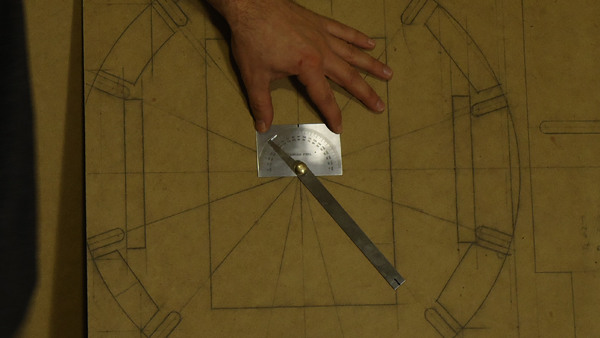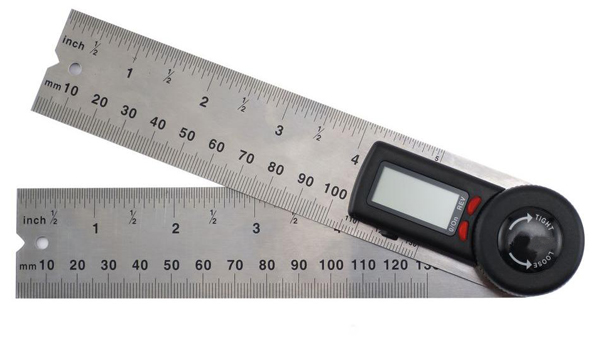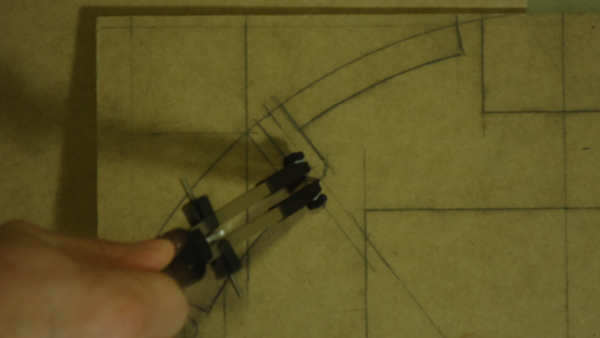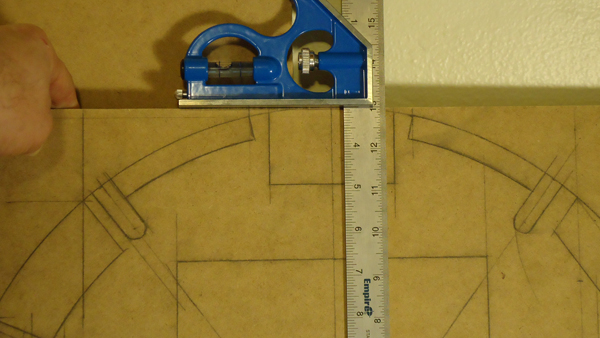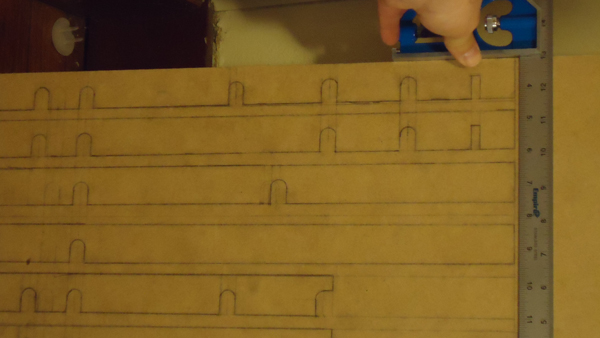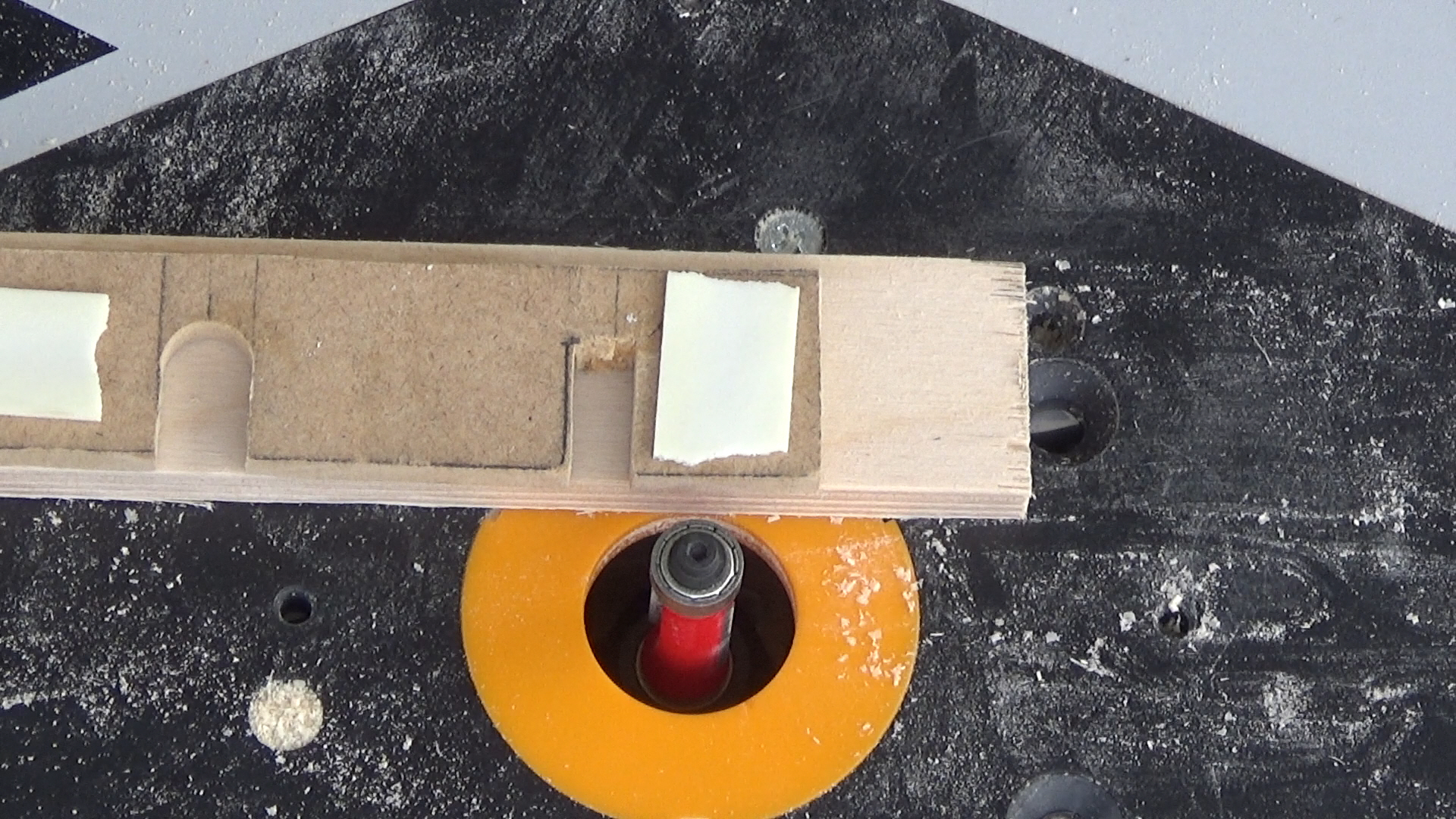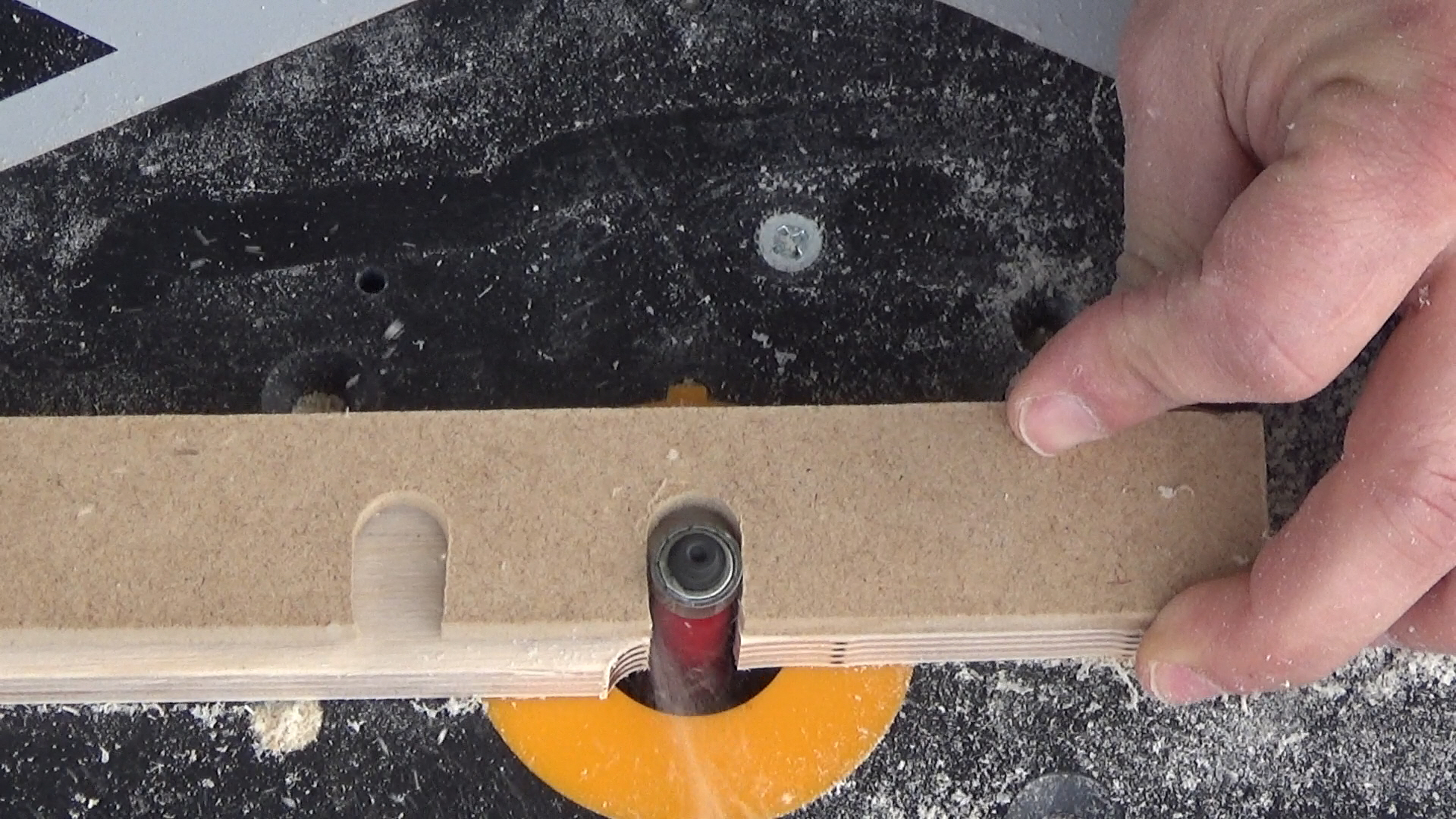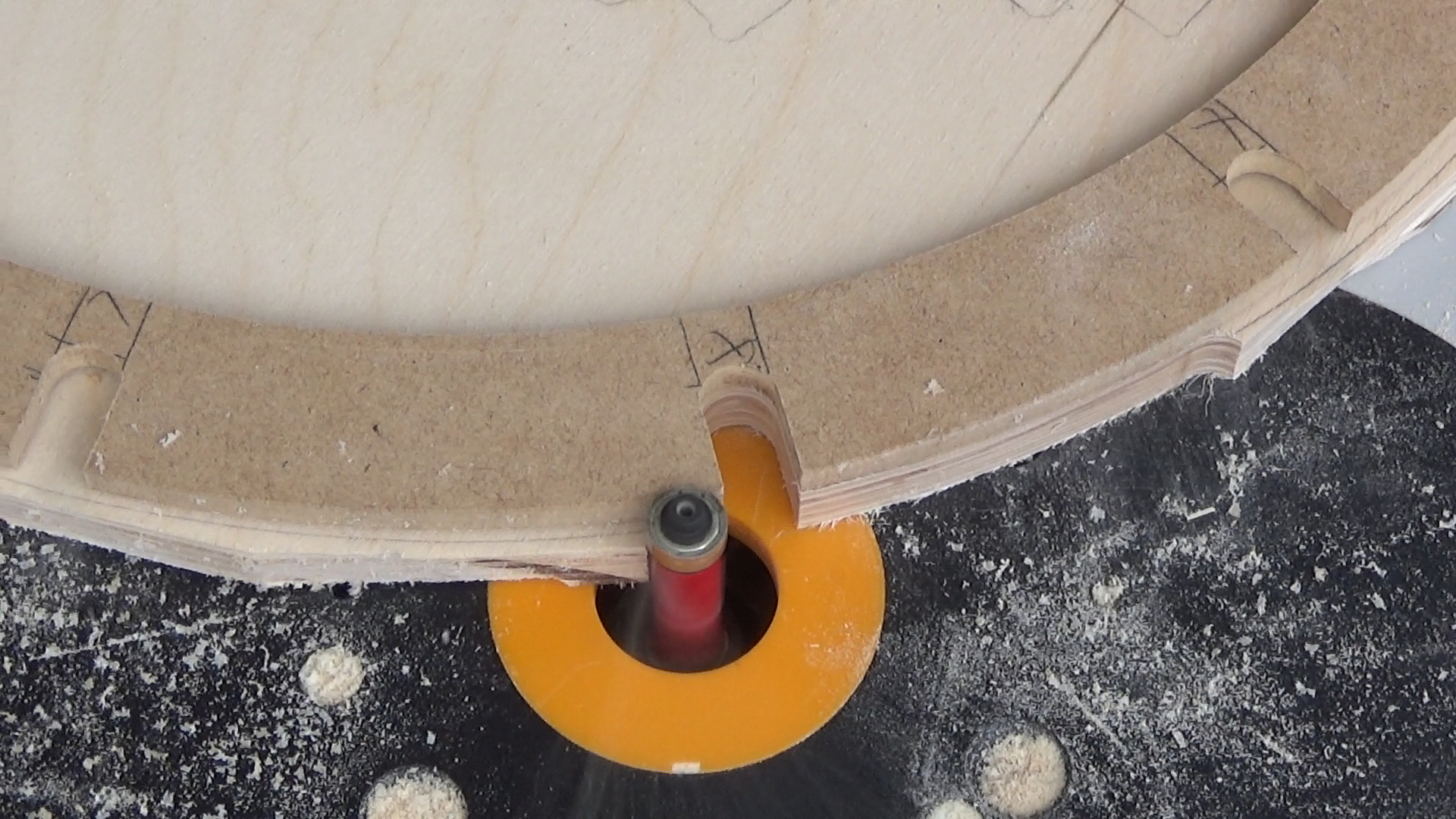The following video is just to be used as a rough guide. I have since figured out a better way to make all the cuts into templates rather than draw them all out.
Use the middle ring template as a way to cut the slots for the shoulder wings, quarter wings, and 1/8th rings. This will also work for the curve to make sure it is exactly the same.
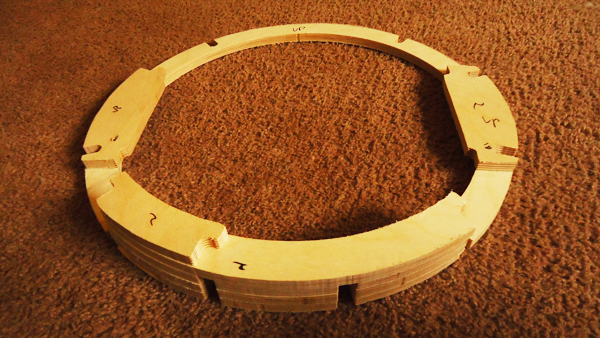
All of these were cut from the middle ring. I used the middle ring as a guide and it gave me perfect dimensions for all rings to be cut. The same can be done for the shoulder wings front portions with the slots. If you make a center line on your bottom plate, you can use that to draw the basic shape of the shoulder wings, including the portion that goes into the the side plates.
Below shows how I cut around a slot I do not want cut into the wood. A simple piece of wood across the slot will work as long as the bearing on the bit is raised to that point. Do not go all the way around like this or you will mess up your template and the work piece at the same time. See this at 3:55 into the above video.
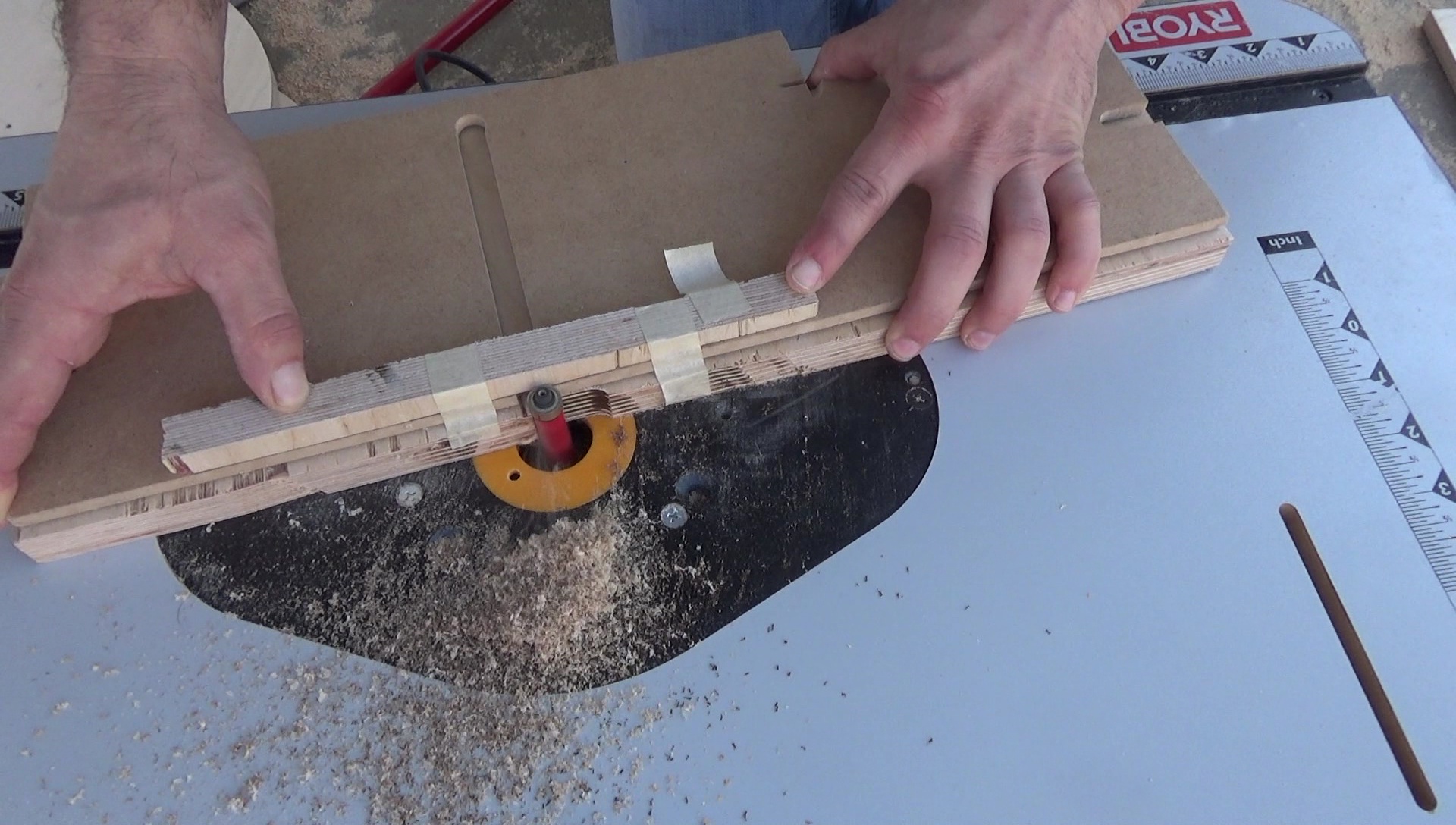
Cutting the slots for the side plates is not to difficult. Use your jig and set the router properly.
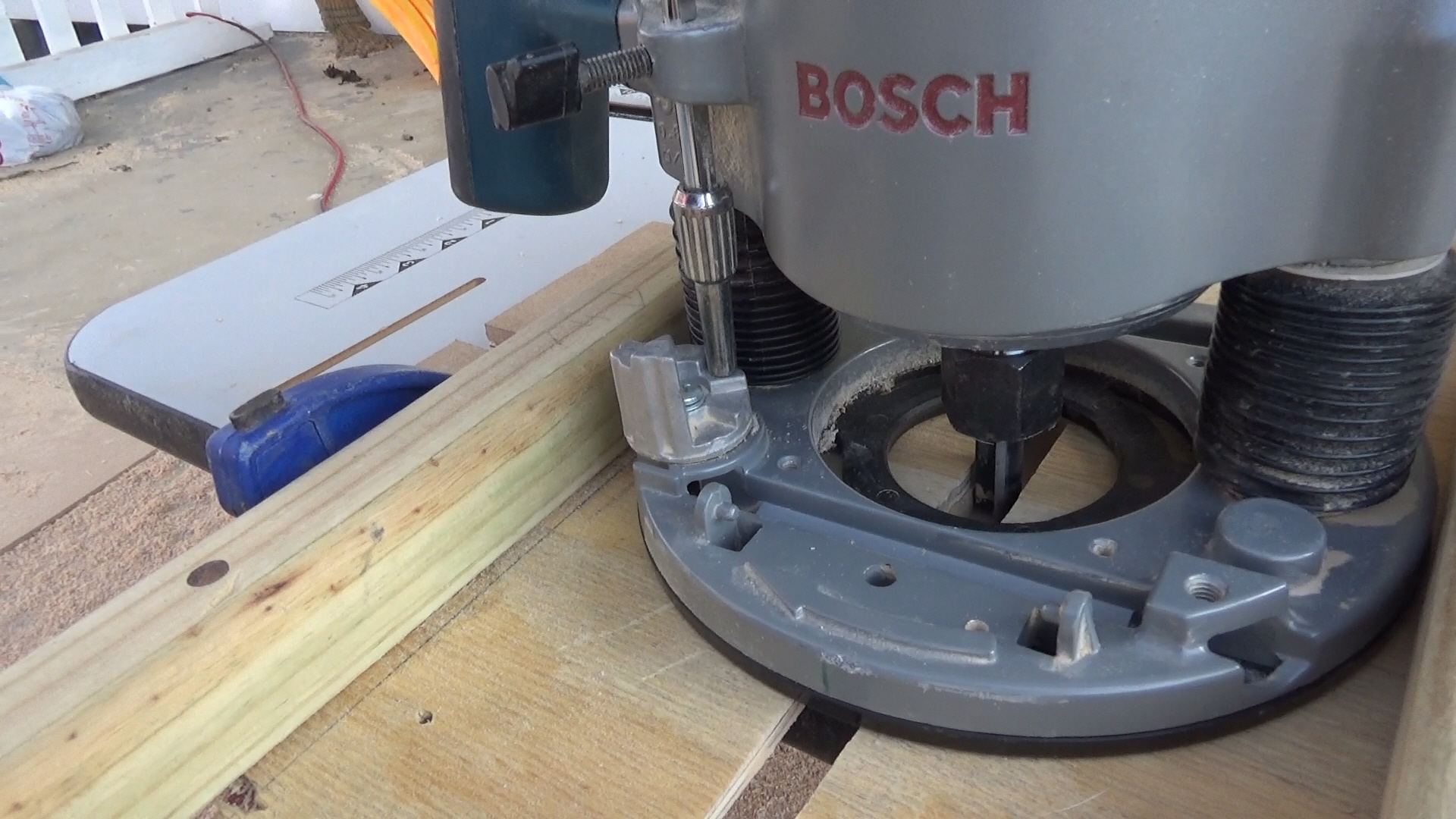
Lower the router onto the work piece and lock in place.
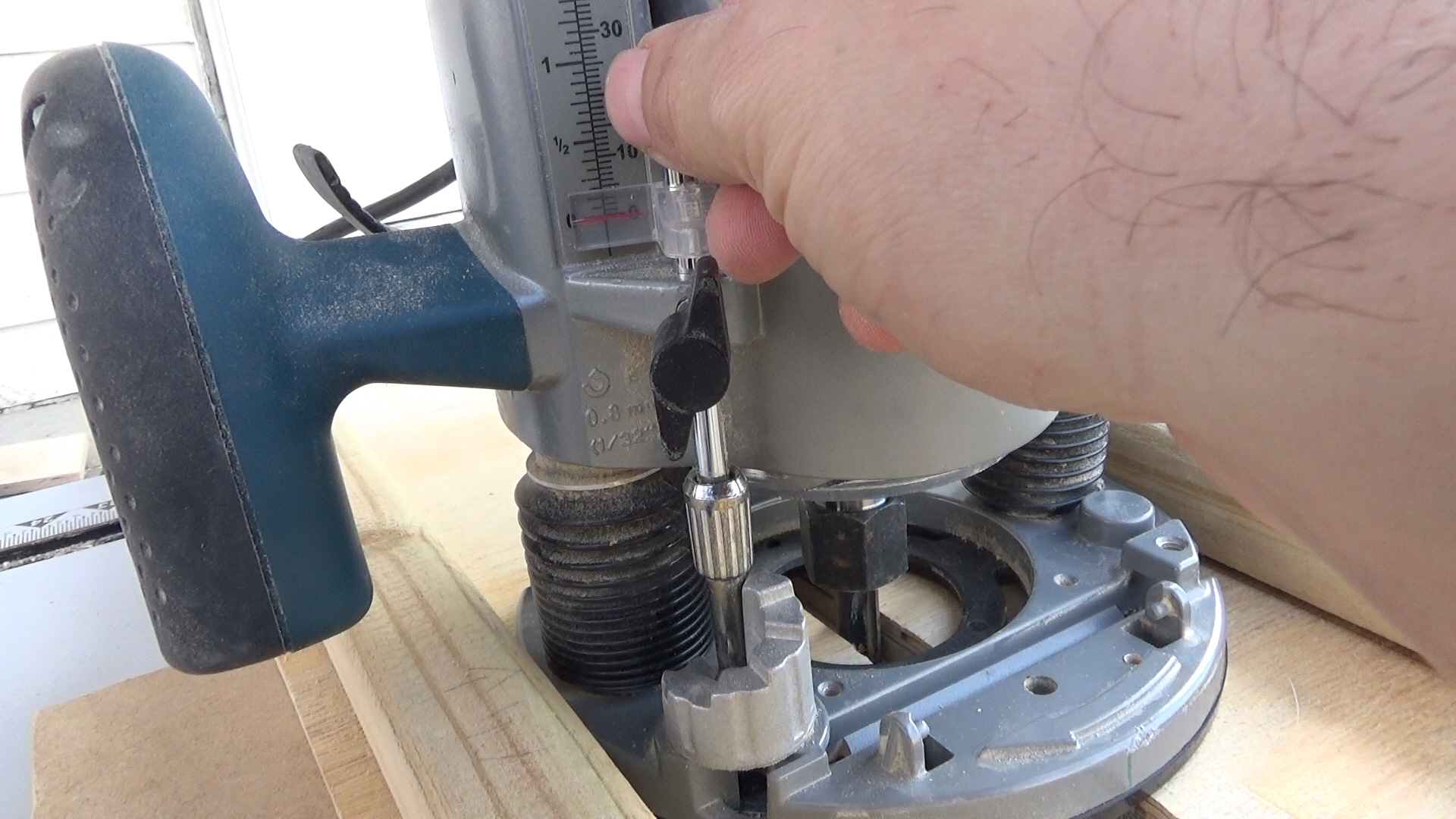
Turn the Depth Turret until the Depth Rod hits the lowest point, with the router still plunged into the workpiece. Lock the depth rod with the lever. Move the red mark to “0”.
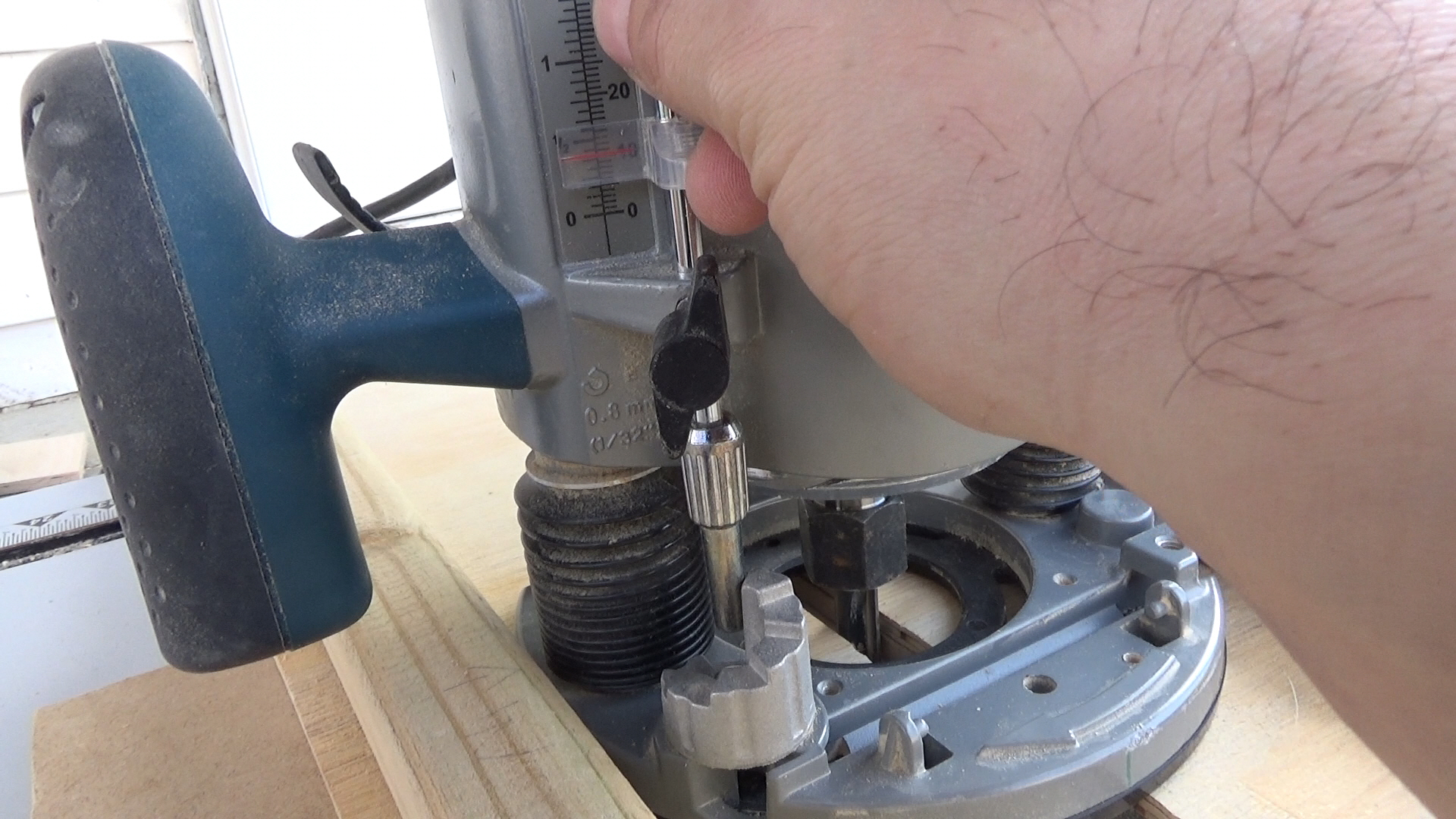
Unlock the Depth Rod, and pull up on the rod until the red line is at your desired depth of cut and relock the depth rod. Now make your cuts.

